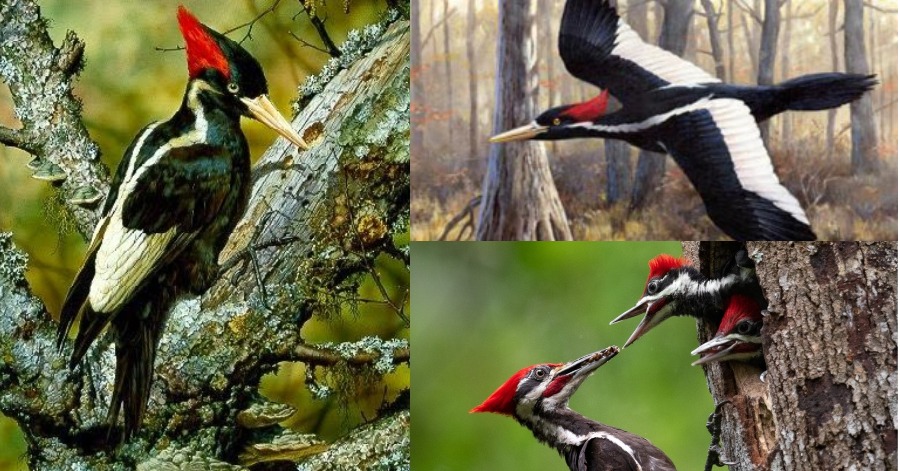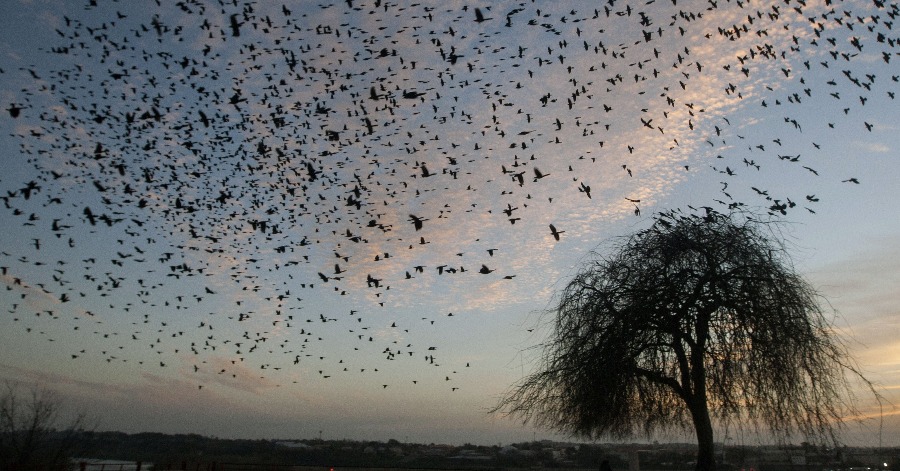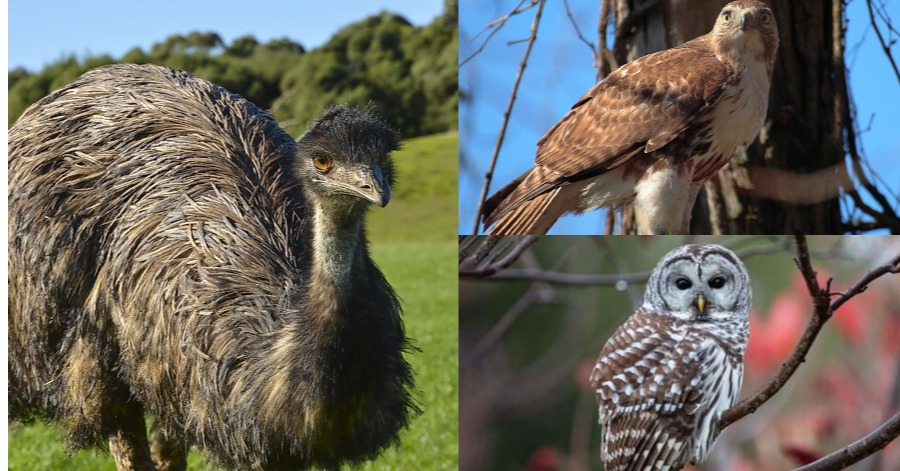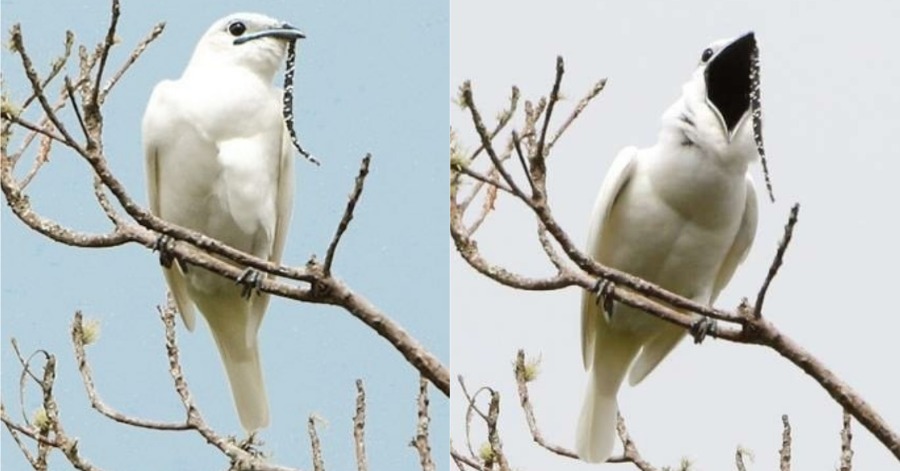Birds are vertebrate animals that have evolved to fly. Many of them can also jump, swim, and dive. Some animals, such as penguins, have lost their ability to fly but still have wings. Birds can be found in a variety of habitats all over the world. The ostrich, which stands nine feet tall, is the largest. The bee hummingbird, which is only two inches long, is the tiniest.
There are many species of birds that exist, some still can be found while others seem to have extinct. Recently, it has been declared that another species of bird had extinct. The ‘ivory-billed woodpecker’.

The majestic ivory-billed woodpecker, a stately black-and-white bird that previously nested in mature forests in the American Southeast and Cuba, was last sighted in the United States in 1944 in Louisiana. With no credible reports for decades, most ornithologists feared the bird had gone extinct. And then, on Wednesday, the US Fish and Wildlife Service revealed its decision to remove 22 creatures and one plant from the Endangered Species Act list, including the ivorybill, because the government deems them extinct.
The ivory-billed woodpecker goes by another name, the ‘Lord God Bird’, a nickname it earned because that’s what people cried out the first time they ever saw one: “Lord God, what a bird.” These birds’ plumage is predominantly a gleaming black-purple. White lines run from the cheekbones to the back of the neck, where they connect. Ivory-bills have a high crest, which is ragged in juveniles. They have a robust and straight bill, as do all woodpeckers, as well as a long, movable, hard-tipped, barbed tongue. The bill of an adult is ivory in hue, while that of a juvenile is chalky white.
‘Ivory’ Bill

Ivory-billed woodpeckers utilize their massive white bill (made of bone rather than ivory) to remove bark from dead but still-standing trees and gain access to the beetle larvae that are their major meal. Some Native Americans used to esteem these currencies as decorative ornaments. They’ve been discovered in archaeological sites far away from the bird’s original range, implying that they were valuable as trade objects.
Habitat

Ivory-billed Woodpeckers foraged in huge stands of trees and in regions where many trees had recently died due to flooding, fire, or other disturbances. They were once found in upland pine woods, but by 1891, they were primarily found in bald cypress swamps, where they bred and foraged at the drier edges where the swamps met highland pine forests.
Diet

Ivory-billed Large beetle larvae from the longhorn, jewel, and click beetle families were largely eaten by woodpeckers. They also ate the considerably smaller larvae of the bark beetle family, including the southern pine beetle, to a lesser extent. These beetles can breed in huge numbers in regions where fires, floods, and other natural disasters have resulted in stands of dead trees, which Ivory-bills prefer. They stripped the bark from dead trees and fallen logs with their enormous bills, or created extensive excavations into the wood as Pileated Woodpeckers do. Hickory, pecan, magnolia, poison ivy, grapes, persimmons, hackberries, and possibly acorns were among the fruits and nuts they consumed.
Behavior

Ivory-billed Woodpeckers were known to be sociable, with reports of up to 11 birds foraging in the same tree at the same time. The birds were most likely monogamous and kept their pair connections all year. A male perched near a female, the duo preened, and then the birds briefly clutched each other’s bills, according to one description of a courtship display. Also, they have an extremely graceful flight with long, swooping glides between trees.
Here are some other cool facts to know about this amazing bird:
- The Ivory-billed woodpecker is the largest woodpecker in the United States.
- Because of its rarity and elusiveness, the Ivory-billed woodpecker is also known as the “Holy Grail bird” and the “Lord God bird” or the “Good God bird.” “King of the Woodpeckers” and “Elvis in Feathers” are two other nicknames for the Ivory-billed woodpecker.
- The Ivory-billed woodpecker is the only North American woodpecker with a beak that is flattened laterally and curved like a beveled wood chisel.
- Ivory-bills usually build their nests in or near broken-off stumps in living trees, where the wood is simpler to excavate; the overhanging stump can help conceal the opening from rain and predators by casting a shadow over it.
- After a series of sightings in Arkansas beginning in 2004, the Cornell Lab of Ornithology was involved in attempts to relocate Ivory-billed Woodpeckers in the southeastern United States from 2006 to 2010.
- Ivory-billed Woodpecker bills were used as decorations by Native Americans. Archeologists discovered Ivory-billed Woodpecker skulls far outside of the woodpecker’s recognized range, indicating a booming bill trade spanning much of North America.
Unfortunately, the Ivory-billed Woodpecker isn’t the only huge North American woodpecker to have perished as a result of habitat degradation. The world’s largest woodpecker, the Imperial Woodpecker of Mexico, hasn’t been sighted since the 1950s. In 2010, a hunt for Imperial Woodpeckers in the Sierra Madre’s pine forests yielded no results. Only museum specimens and a few small fragments of reconstructed film footage from the 1950s are currently known about the bird.
Sources:National Geographic,Science History Institute,All About Birds,Animalia









Leave a Comment